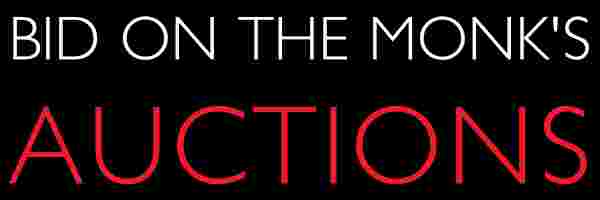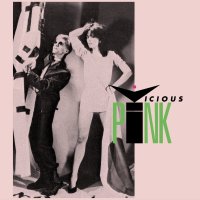An East Coast Monk In King Wenner’s Court [part the first]
[…continued from last post]
RRHOF – the early years
I will come right out and admit up front that I have a contentious relationship to the Rock + Roll Hall Of Fame. I spent most of the 80s hearing about this “hall of fame” that existed from 1983 to 1995 only as an idea or ceremony awaiting a physical manifestation. I had big problems with the fact that Rolling Stone publisher Jann Wenner was sitting on Ahmet Ertegun’s handpicked board along with Seymour Stein [Sire Records] and Bob Krasnow [Elektra], and a pair of lawyers [Suzan Evans and Allen Grubman]. Such diversity! We had Ahmet Ertegun [Atlantic] along with the rest of the bigshots of the WEA consortium and a couple of high-priced mouthpieces for extra bad karma. Sorry RCA, CBS, Polygram. You lose!
Most galling to me was a man who hadn’t made his fortune on the backs of African-American blues musicians, yet managed to annoy me all the same. I’m referring to the smug West Coast publisher of the ultimate hippie sell-out rag who built the Rock Hegemony® from the ground up. Maybe I shouldn’t be too hard on Jann Wenner; without his example we might have never had Punk Rock! Because he was the go-to figurehead that the movement could react against. The person who was bigger than any single dinosaur band alone, yet one who represented all of the values that Punk manifested to oppose.
The idea that there should be a Rock + Roll Hall Of Fame at all was ludicrous to me. Especially as an ongoing, year-after-year concern. If it were up to me, the Rock + Roll Hall Of Fame would consist of maybe a dozen African-American faces with a handful of country musicians who pushed the envelope from their end to create the interesting hybrid we know as Rock + Roll. End of story. And by my reckoning, it lasted maybe a dozen years; ending by 1956. After that came Rock, a different beast entirely.
In spite of all of these thoughts, I have managed to cultivate some sort of relationship with the actual museum. I recall being inundated with mailings from the RRHOF leading up to their actual opening on Memorial Day of 1995. This I put down to subscribing to Goldmine Magazine, who sold them my contact information. Well, that was a no-brainer. I’m sure that much of the Goldmine readership was the target audience for this claptrap. Old timers who collected records will understand the need that Goldmine fulfilled in that pre-internet era. Anyway, I scorned and ignored all of these direct mail entreaties to join as a member. Until I met my wife.
By early 1995 we were a couple, and she was from Akron, Ohio. Just 45 minutes away from Cleveland and the site of the Rock + Roll Hall Of Fame Museum set to open on Memorial Day, 1995. Her sister had given her a membership as a gift and we had plans to fly up from Florida on Memorial Day weekend so that I could meet her extended family. Golly. It was now time to eat my words and buy that RRHOF charter membership that I had disdained for so long if we were going to be in Cleveland that weekend, attending the grand opening. So I did.
The opening weekend was hectic to say the least, but we managed to slog through the glass pyramid and gawp at artifacts and ephemera that were related to the various styles and movements within Rock as well as the musicians who had been inducted in the first decade. As someone who finds even the displays in a House Of Blues fascinating in spite of my antipathy for that chain, I have to admit. Show me a room full of music-related artifacts and I will find it fascinating. And this place was the 800-lb gorilla of music related artifacts. A reasonably well curated pyramid filled to the brim with fascinating things.
We went to the RRHOF a second time in 2001, when we were having a very peripatetic year; moving from Florida to North Carolina and spending some extended time visiting family in Akron. But that was the last time we had visited this museum. Until last month. Since we were going up to Cleveland to see Mott The Hoople, it occurred to me that we might as well take in the RRHOF again for the first time in ages. My wife also suggested we take in the stunning Wade Memorial Chapel at Cleveland’s Lakeview Cemetery again as we had visited it on one of our last visits and the Louis Comfort Tiffany designed chapel is amazingly beautiful. So a whole day in Cleveland seemed appropriate. We could also eat at Empress Taytu, a great Ethiopian restaurant in nearby Cleveland Heights before the show. What a day!
Then when looking into the RRHOF to book tickets, I saw that on Sunday April 7th, they had a program feting Cleveland International Records, a local management/label concern that was involved with Ian Hunter around the time of his classic “You’re Never Alone With A Schizophrenic” album. The thought occurred that with Ian in town for a show the night before, and the next gig in Pennsylvania on the 8th, why wouldn’t Ian be a part of this panel event? But with the show on Saturday and a visit to the RRHOF the next day, that meant driving to CLE two days in a row. And the page on the RRHOF website touting this event said nothing about Hunter being a part of it. So we did the sensible thing and just pencilled in Saturday as our day in Cleveland.
Next: …Cleveland Rocks!






![Forty Years Ago Today, Simple Minds Changed Everything with "New Gold Dream [81,82,83,84]"](https://postpunkmonk.files.wordpress.com/2022/09/new-gold-dream-in-spotlights.jpg?w=200&h=200&crop=1)
![Nits Enthrall For Their Golden Jubilee Concert At Royal Theatre Carré [part 2]](https://postpunkmonk.files.wordpress.com/2024/04/nits50-stage-2.jpg?w=200&h=200&crop=1)


Hello Cleveland! I love the sound of this place, but not the idea of some suits getting to chose who is in or out.
LikeLiked by 1 person
steveforthedeaf – Boy howdy, you’ve got that right!
LikeLiked by 1 person